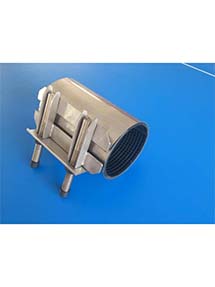Improving Clamp Stability and Functionality through Enhanced Fixing Techniques and Design Innovations
Understanding Clamp Fixing A Comprehensive Overview
Clamp fixing is an essential technique widely used in various industries, ranging from manufacturing to construction. This method involves securing objects in place to ensure stability and precision during operation or assembly. In this article, we will explore the concept of clamp fixing, its applications, benefits, and the various types available.
What is Clamp Fixing?
At its core, clamp fixing refers to the utilization of a clamping device to hold an object securely in place. Clamps can be found in numerous forms, ranging from simple manual tools to sophisticated hydraulic systems. The primary purpose is to prevent movement, which can be crucial in processes such as welding, drilling, or assembly line operations.
Applications of Clamp Fixing
Clamp fixing is employed across numerous sectors, including
1. Manufacturing In fabrication and assembly, clamps are indispensable for holding parts securely while they are being joined or processed. For instance, in metalworking, clamps are used to stabilize metal sheets during welding.
2. Construction Clamps are often used in construction sites to hold materials such as beams or frames in place until they can be secured with bolts or other fasteners. This ensures accuracy in measurements and alignment.
3. Woodworking Woodworkers employ clamps to hold pieces together while glue sets or during other final assembly stages. Without proper clamping, joints may not align perfectly, resulting in structural weaknesses.
4. Repair and Maintenance In automotive and machinery repair, clamps provide the necessary hold to facilitate precise adjustments and replacements. They are fundamental in ensuring that parts do not shift during assembly or disassembly.
Benefits of Clamp Fixing
The advantages of using clamp fixing are manifold
- Precision Clamps offer a level of precision that is hard to achieve through manual holding. They ensure that parts are held at the correct angle and position, which is particularly important in alignment-sensitive tasks.
clamp fixing

- Safety Securely clamped materials reduce the risk of accidents; loose components can lead to injuries or equipment damage. Clamps provide a safe working environment by ensuring that materials remain stable during processes.
- Efficiency Using clamps can significantly speed up production processes. Workers can secure materials quickly and focus on the task at hand without the worry of adjusting or stabilizing parts continuously.
- Versatility Clamps come in a variety of shapes and sizes, allowing them to be used in a multitude of applications across different industries. From simple hand tools to advanced clamping systems, there’s a suitable option for nearly every task.
Types of Clamps
Various types of clamps are available, each designed for specific uses
- C-Clamps These are shaped like the letter 'C' and are widely used in woodworking and metalworking. Their design allows for a strong hold on flat surfaces.
- Pipe Clamps Ideal for securing pipes during assembly, these clamps are adjustable and can accommodate various pipe sizes.
- Bar Clamps With a long, narrow bar, these clamps provide excellent leverage for securing larger objects.
- Spring Clamps Lightweight and easy to handle, spring clamps are perfect for quick, temporary holds.
- Toggle Clamps These provide a fast clamping solution and are often used in production settings where speed is essential.
Conclusion
Clamp fixing is a fundamental technique that enhances precision, safety, and efficiency across various industries. Understanding the different types of clamps and their applications can significantly improve workflow and outcome in manufacturing, construction, woodworking, and repair endeavors. As technology advances, the designs and capabilities of clamps continue to evolve, making them even more indispensable in modern practices. Whether you are a seasoned professional or a DIY enthusiast, mastering the art of clamp fixing is essential for achieving the best results in your projects.
-
The Smarter Choice for Pedestrian AreasNewsJun.30,2025
-
The Gold Standard in Round Drain CoversNewsJun.30,2025
-
The Gold Standard in Manhole Cover SystemsNewsJun.30,2025
-
Superior Drainage Solutions with Premium Gully GratesNewsJun.30,2025
-
Superior Drainage Solutions for Global InfrastructureNewsJun.30,2025
-
Square Manhole Solutions for Modern InfrastructureNewsJun.30,2025
-
Premium Manhole Covers for Modern InfrastructureNewsJun.30,2025
